New products at Crocus
by Sarah - June 11th, 2009.Filed under: Crocus, New Products.
New products today at Crocus
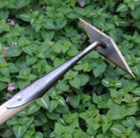
de-wit-diamond-hoe £39.99
This unique push / pull diamond hoe features 4 very sharp forged edges and a slanted P-grip design handle for optimal pushing and pulling while cutting weeds just below the soil surface. The long 1.6 meter hand helps prevent back strain.Special feature. Lock nut fitted to tool head for tightening handleand head during natural wood shrinkage. This keeps a solid feelover the lifetime of the tool.The Dutch are rightly regarded as makers of the finest gardening tools. The two best are Sneeboer and de Wit. Sneeboer were founded in 1913, but De Wit dates back to1898. The 4th generation of De Wits now run the business; one is a trained wood turner, the other trained as a blacksmith. Both Sneeboer and De Wit use traditional techniques, but different materials. Sneeboer use stainless steel and de Wit use carbon steel. Carbon Steel is naturally tougher than Stainless steel and is not prone to metal fatigue like Stainless Steel.De Wit burnish their steel. This not only helps to protect it for longer but gives it a patina that blackens it – just like traditional English tools from the Edwardian era.All De Wit tools have turned hardwood handles of oiled Ash. Ash is not only very strong but resists shock better than woods like oak or beech, which is why it is always used for Axe handles.The result is a beautiful tool to hold in the hand but rugged and durable.They feel so natural to use that they are like an extension of theperson that uses them. These tools will give you a lifetime of use, until you hand them on.SizeHead: 5cm long x 21cm wide ( 2.1 x 8)Total Length: 160 cm long (63)

foxtail lily £9.99
Position: full sunSoil: fertile, sandy, well-drained soil, including alkaline soilRate of growth: fastFlowering period: June and JulyHardiness: fully hardyMagnificent spires emerge in early spring forming elegant, slender shafts of colour. Growing from a bulb and hailing from dry, rocky mountain sides, this elegant perennial will thrive in a sunny, well-drained border. Because of its striking, upright habit it is ideal for creating vertical interest in mixed borders – it also associates well in prairie style planting schemes. The tiny flowers of this cultivar are white, with pale green markings.Foxtail lilies need to be planted in fertile but well-drained soil with the crown not far below soil level. They start to grow in late winter and spring, gathering their strength before they produce their towering flower spikes in summer. Each flower spike has hundres of flowers which open from the bottom upwards, creating a stunning effect. They thrive in the sunniest spot in the garden, especially if the base of the plant isn't shaded as this can decrease the number of flowering spikes produced. Garden care: In September every three to five years carefully lift and divide congested clumps. Replant the strongest crown on a layer of sharp grit, spreading out the roots and covering them with a thin (5cm/2in) layer of soil. In frost-prone areas cover with a dry mulch of fern leaves.
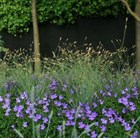
nest moor grass £9.99
Position: grows in both full sun or lightly dappled shadeSoil: moderately fertile, well drained, neutral or slightly alkalineRate of growth: averageFlowering period: July to OctoberHardiness: fully hardyA native of central and southern Italy, this gorgeous little grass is grown mainly for its colourful foliage. It forms dense mounds of pale grey-green to grey-blue leaves, which stay on the plant throughout the year. In spring it throws up whitish green cone-shaped flowerspikes, that bobble about in the breeze. Once established it can be very drought tolerant, and it looks great in a herbaceous or mixed border or wildflower meadow.Garden care: Gently comb through the foliage in spring to remove some of the older foliage and to encourage fresh new growth.
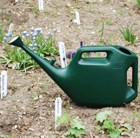
harcostar-starcan-watering-can £8.99
A slimline watering can that has top and rear handles for easy carrying. It also has a long spout with brass-faced rose and an angled filler hole making it easy to fill it from your water butt.
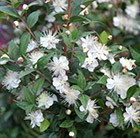
common myrtle £8.99
Position: full sunSoil: fertile, moist, well-drained soilRate of growth: average Flowering period: July to AugustHardiness: frost hardy (needs winter protection in cold areas)In mid to late summer, this bushy, evergreen shrub is festooned with fragrant, white, fluffy flowers, followed by round, purple-black berries. But it is an asset to the garden all year round, with glossy, pointed leaves that give off a fragrant aroma when crushed and provide a handsome backdrop for other flowering plants. A useful and pretty shrub for a sunny border or for growing against a south or west-facing wall. Garden care : Protect from cold, drying winds. Apply a 5-7cm (2-3in) mulch of well-rotted garden compost or manure around the base of the plant in early spring. Remove any unwanted growth in late spring. Goes well with: Sarcococca confusa, Lavandula x intermedia 'Dutch Group', Rosmarinus officinalis 'Miss Jessop's Upright', Petrovskia atriplicifolia, Iris reticulata, Clematis viticella 'Purpurea Plena Elegans'
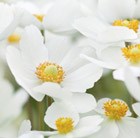
Snowdrop anemone £7.99
Position: full sun or partial shadeSoil: moist but well drained, humus-rich soil. Likes neutral or alkaline soilsRate of growth: fast Flowering period: April – MayHardiness: fully hardy A lovely little anemone which forms a mound of deeply cut foliage, topped with  nodding white flowers with yellow centres in late spring. The plant gets its common name from the way the flower buds emerge on bent stems, so they hang like snowdrops. Then they straighten up and face outwards as the flowers start to open. The petals catch the breeze, making them look a little like butterflies, and they will grow to form open cup shapes up to 7cm across. They are scented and are good for cutting, but if you leave them on, they will be followed by white woolly seedheads. Find the right spot for them and they will naturalise and spread into large clumps. Garden care: Apply a generous 5-7cm mulch of well-rotted garden compost or manure around the base of the plant in spring. Cut back to just above ground level if they start to look messy and they will quickly rejuvenate. Where necessary lift and divide congested clumps in early spring.
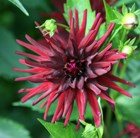
dahlia (syn. Nuit D'ete) £6.99
A fashionably dark maroon cactus dahlia that is great for the dark border. The fully double flowers have long, narrow, pointed petals that recurve for more half their length. This dahlia looks great planted in bold groups in a sunny, sheltered border. The flowers are produced for July until the first frosts, when the tubers should be lifted for over-wintering in a frost-free place.Position: full sunSoil: fertile, humus-rich soilRate of growth: average Flowering period: July to October Flower colour: dark maroonOther features: excellent cut-flowersHardiness: half hardyGarden care: Provide a high-nitrogen liquid feed each week in June, then a high-potash fertiliser each week from July to September. Once the first frosts have blackened the foliage, carefully lift and clean the tubers and allow them to dry naturally indoors. Place the dry tubers in a shallow tray, just covered with slightly moist potting compost, sand or vermiculite. Store in a frost-free place, checking frequently over the winter months
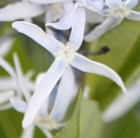
amsonia £5.99
Position: full sun or partial shadeSoil: moist but well-drained soilRate of growth: averageFlowering period: May to JulyHardiness: fully hardyThese easy to grow perennials will create a massive impact when their dark blue flowerbuds open to reveal their star-like, steely blue flowers in late spring and summer. The flowers are loosely held, in slightly pendulous clusters on top of tall stems bearing slender, tapering leaves, which turn interesting shades of yellow before dying back in autumn. The flowers can be cut and used in floral arrangements, but to stem the milky sap the end of the stems should be seared in a flame before popping in a vase.Garden care: Divide congested plants in spring.
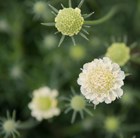
small scabious £5.49
Position: full sunSoil: well-drained, neutral to slightly alkaline soilRate of growth: averageFlowering period: June to AugustFlower colour: pale lemon yellowOther features: the flowers are highly attractive to butterflies and bees and make a pretty cut posyHardiness: fully hardyThe delicate looking creamy lemon coloured flowers are held aloft on wiry stems throughout summer, adding a sense of movement and lightness to mixed or hebaceous borders. A firm favourite in cottage garden schemes, they also look good in prairie style planting. Garden care: Protect young plants from slug damage using environmentally friendly slug pellets or beer traps. Deadhead regularly to prolong flowering and cut back in autumn to maintain tidy habit and form. It is worth keeping in mind that these plants are biennial or short lived perennials.
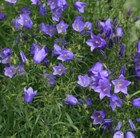
European Hare-Bellflower £1.99
This is an elegant plant with tall, loose trusses of clear blue, nodding flowers from April to August. It is most often found in dry grassland, but does equally well on sunny banks or rocky outcrops. Once settled in it will happily spread by underground suckers.






